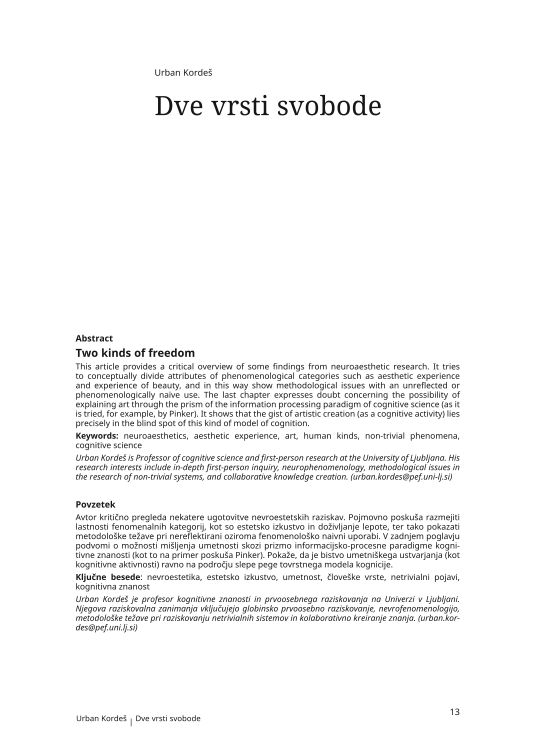This article provides a critical overview of some findings from neuroaesthetic research. It tries to conceptually divide attributes of phenomenological categories such as aesthetic experience and experience of beauty, and in this way show methodological issues with an unreflected or phenomenologically naïve use. The last chapter expresses doubt concerning the possibility of explaining art through the prism of the information processing paradigm of cognitive science (as it is tried, for example, by Pinker). It shows that the gist of artistic creation (as a cognitive activity) lies precisely in the blind spot of this kind of model of cognition.




